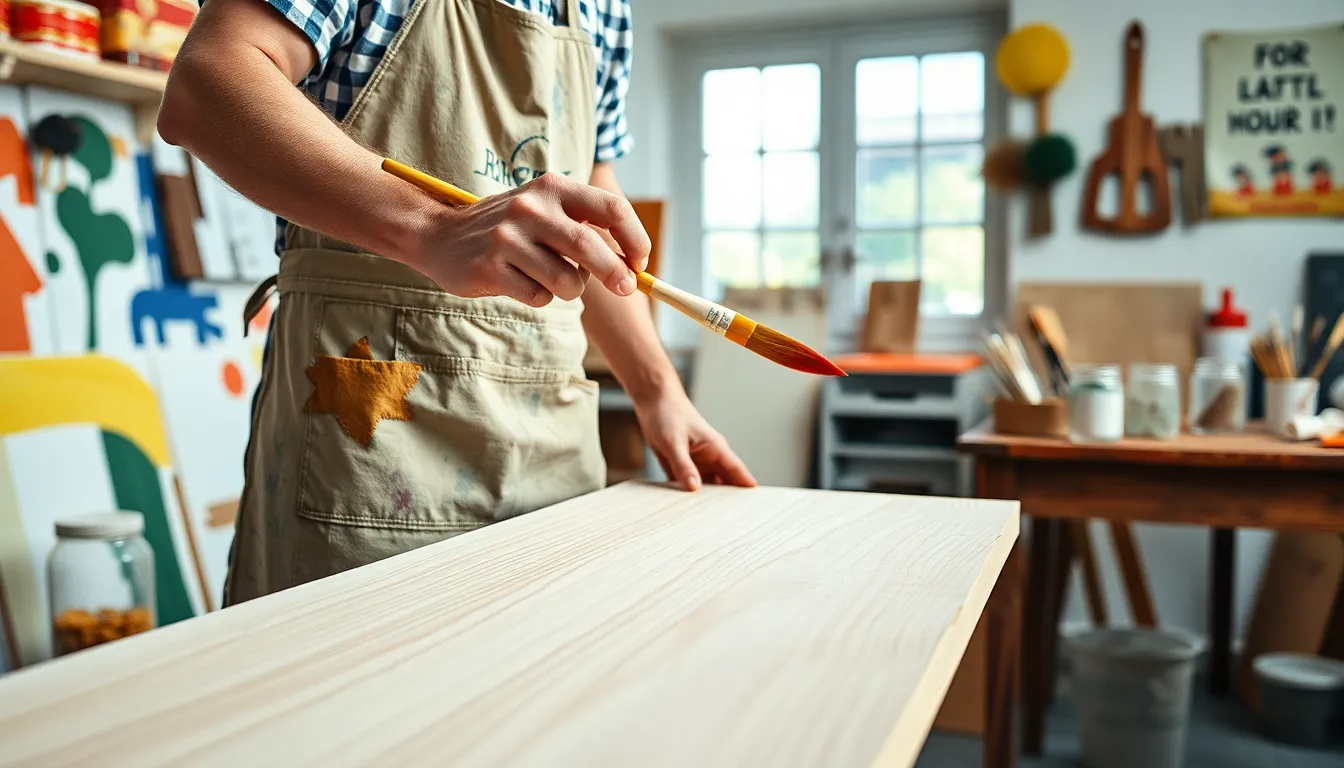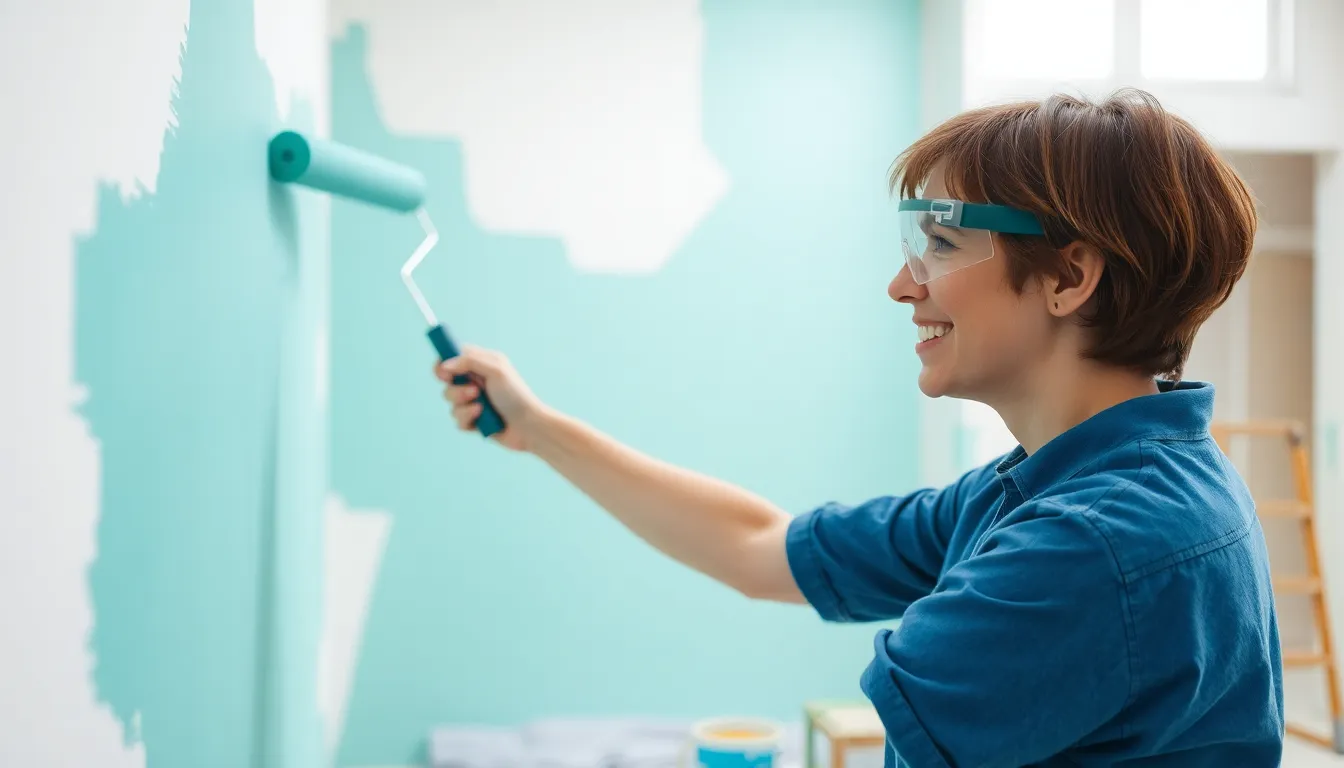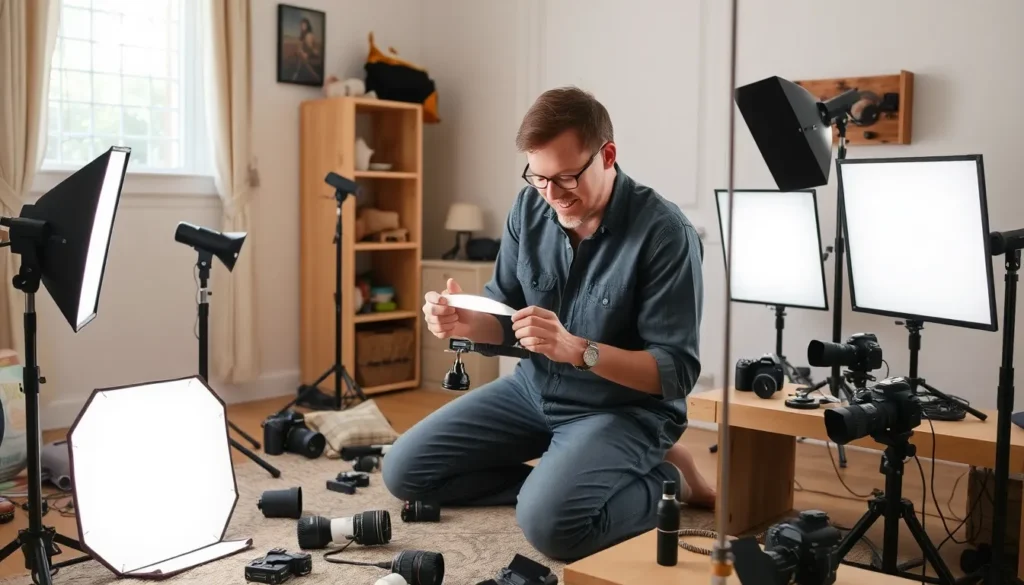Painting can transform a space, adding color and personality to any room. Whether it’s a small accent wall or an entire house, the right techniques can make all the difference. With the right approach, anyone can achieve professional-looking results without breaking the bank.
From selecting the perfect color palette to mastering brush techniques, understanding the fundamentals of painting is essential. This article shares invaluable tips and tricks that can elevate any painting project. Whether a novice or a seasoned DIY enthusiast, these insights will help create stunning results that impress.
Table of Contents
ToggleEssential Painting Tips for Beginners
Painting requires attention to detail and the right materials. Selecting quality supplies significantly impacts the final result.
Choosing the Right Materials
- Select high-quality paint: Invest in paint that offers better durability and coverage. Look for brands with positive reviews and warranties.
- Use appropriate brushes and rollers: Choose brushes and rollers designed for the specific type of paint. Synthetic brushes work well with latex paint, while natural bristle brushes suit oil-based paints.
- Prepare the workspace: Gather drop cloths, painter’s tape, and a paint tray to ensure an organized and efficient setup.
- Don’t forget safety gear: Wear safety goggles, masks, and gloves to protect against paint splatters and fumes. Proper ventilation enhances comfort during painting.
Understanding Color Theory
- Know color relationships: Familiarize with the color wheel. Complementary colors enhance each other, while analogous colors create harmony.
- Choose the right undertone: Identify warm and cool undertones in paint samples. A warm color, like red, can create an inviting space, while a cool color, like blue, offers a calming effect.
- Test colors in natural light: Evaluate color choices under different lighting conditions. Colors may appear differently in various lights, affecting the overall ambiance.
- Consider color psychology: Understand how colors influence emotions. For instance, yellow evokes happiness, while green symbolizes tranquility. Use this knowledge to select colors that match the intended mood of the room.
Techniques for Successful Painting

Mastering various painting techniques enhances the overall quality and appearance of any project. Understanding brush strokes, layering, and blending can significantly influence the results.
Brush Strokes and Application
Choosing the right brush significantly impacts stroke quality. Use high-quality brushes designed for specific tasks, such as flat or angled brushes for edges and larger areas.
- Apply even pressure while moving the brush in consistent strokes.
- Utilize long, sweeping motions for large surfaces to minimize streaks.
- Employ short, controlled strokes for edges and details, ensuring precision.
- Experiment with different brush types, including foam rollers or specialty brushes, to achieve unique finishes.
Layering and Blending
Layering paint creates depth and richness in color.
- Start with lighter colors before applying darker tones to ensure an effective base.
- Allow each layer to dry completely before adding additional coats.
- Utilize blending techniques to create seamless transitions between colors.
- Blend by gently feathering the edges of wet paint with a soft brush or sponge to achieve smooth color shifts.
Applying these techniques effectively transforms any painting project, resulting in a polished and professional finish.
Common Mistakes to Avoid
Avoiding common painting mistakes can significantly enhance the quality of a project. Recognizing and addressing these errors before starting ensures a more successful outcome.
Overworking Your Paint
Overworking paint can lead to uneven textures and streaks. Applying too many brush strokes or excessive rolling makes the paint dry incorrectly, resulting in a patchy finish. Applying paint in thin, even layers allows for proper drying and a smooth appearance. Using the right tools and techniques for application minimizes the urge to overwork the paint, ensuring better results.
Not Preparing Your Surface
Not preparing the surface before painting leads to adhesion issues and an unprofessional look. Cleaning the walls, repairing holes, and sanding rough spots creates a smooth base for paint application. Additionally, priming surfaces ensures better coverage and color accuracy. Skipping these steps may cause paint to peel or chip over time, compromising the integrity of the project. Investing time in proper surface preparation guarantees a longer-lasting and visually appealing finish.
Advanced Painting Tips
Advanced techniques can elevate any painting project. By exploring different mediums and employing methods to create texture and depth, he or she can achieve distinct and captivating results.
Experimenting with Different Mediums
Exploring various mediums can lead to unique artistic outcomes. Acrylic, oil, watercolor, and gouache each have distinct properties that can affect the final appearance.
- Acrylic offers quick drying times and versatility. It works well on different surfaces and can mimic the effects of oil and watercolor.
- Oil provides rich color depth and longer drying times, allowing for detailed blending. It’s ideal for creating smooth transitions.
- Watercolor allows for fluidity and transparency. It’s useful for layering and achieving delicate washes.
- Gouache can provide opaque colors and is re-wettable, offering flexibility in adjustments after the initial application.
By mixing and layering these mediums, artists can enhance their expression and create visually stunning work.
Creating Texture and Depth
Incorporating texture and depth adds interest to a painting. Several techniques contribute to achieving these effects.
- Impasto involves applying thick layers of paint, creating a three-dimensional surface. This technique enhances light reflectivity and visual appeal.
- Glazing entails the application of transparent layers over dried paint. This method deepens colors and adds a subtle luminosity.
- Sgraffito consists of scratching through layers of paint to reveal underlayers. This creates a unique texture and adds complexity.
- Collage can blend different materials, introducing varied textures and dimensions.
Using these methods, along with attention to detail, enables artists to produce paintings that engage viewers and invite closer inspection.
Painting offers endless possibilities for creativity and expression. By applying the tips and techniques discussed, anyone can transform their space and achieve remarkable results. Emphasizing quality materials and mastering essential skills can make a significant difference in the final outcome.
Whether tackling a small project or a grand transformation, attention to detail and a willingness to experiment with colors and techniques will lead to impressive results. With the right approach and mindset, every painting endeavor can become a rewarding experience, providing not just a beautiful finish but also a sense of accomplishment. Embrace the journey and let creativity flow.



